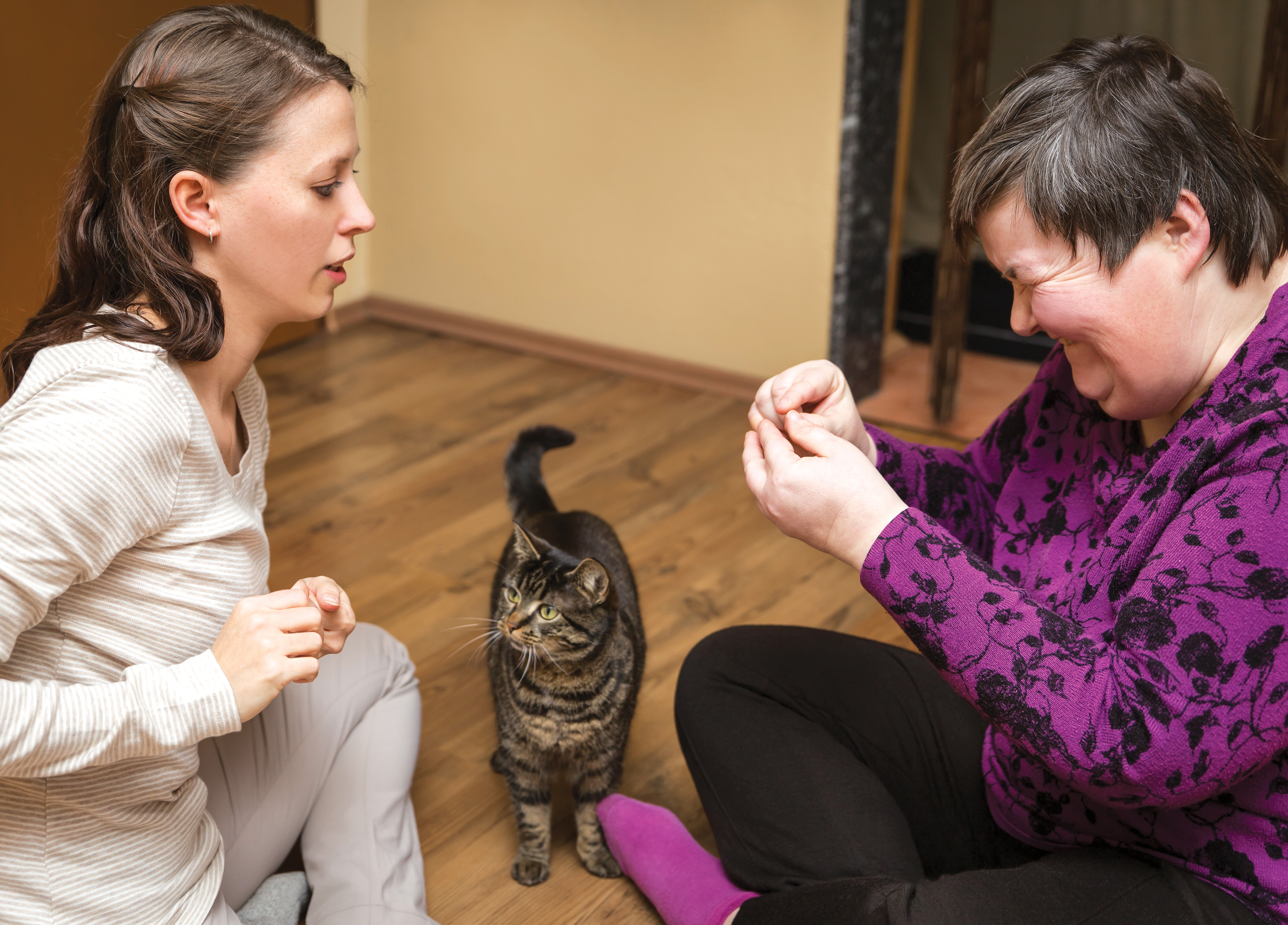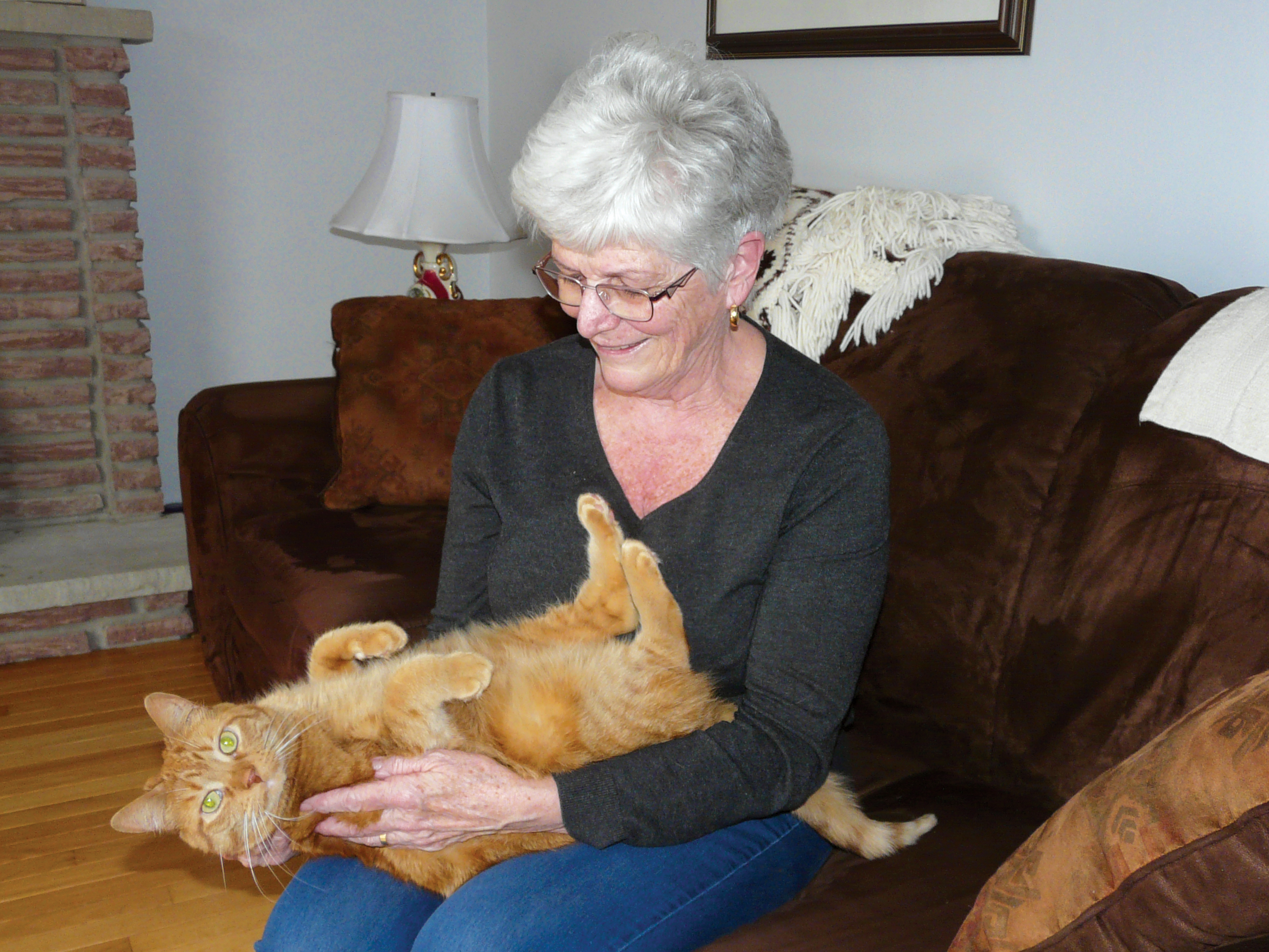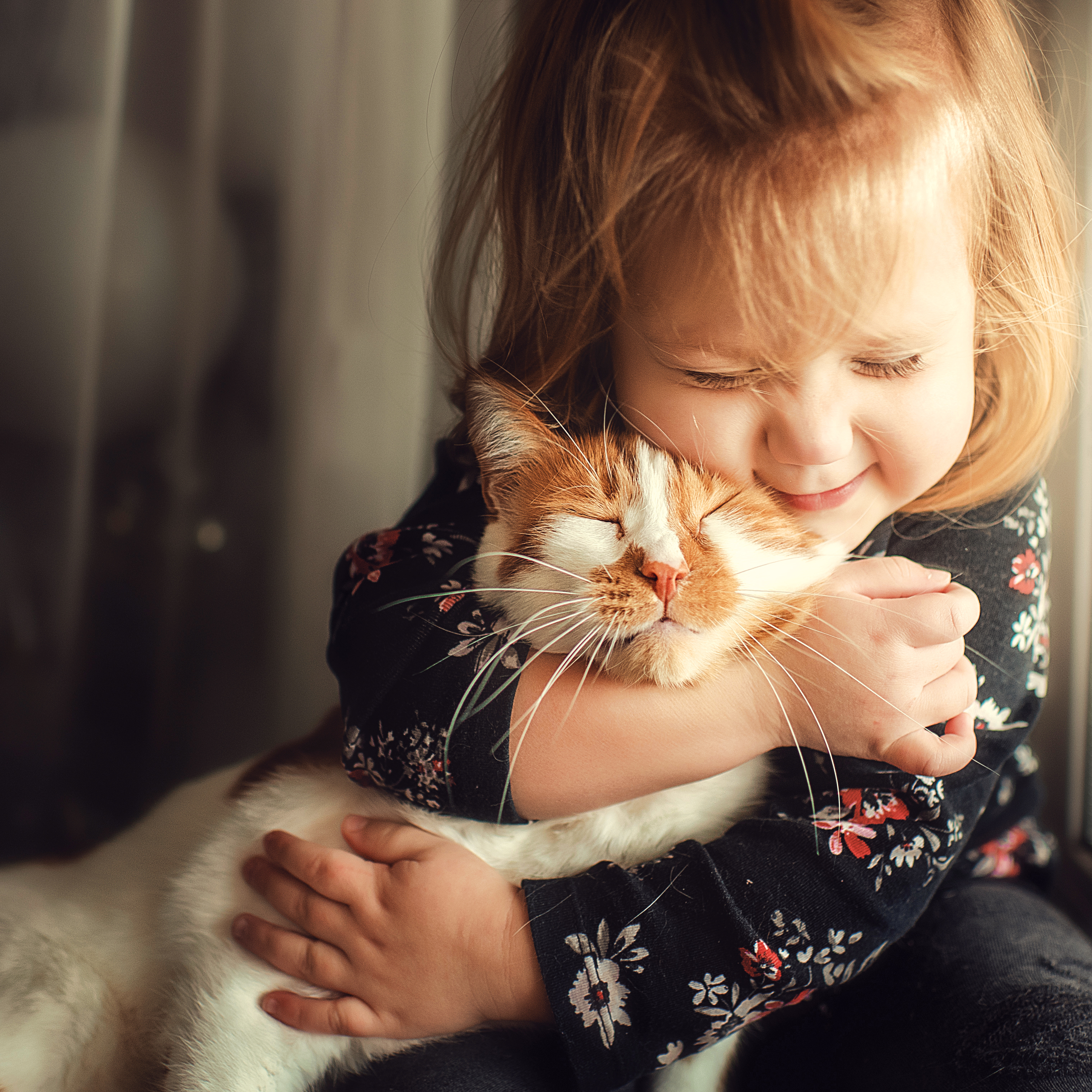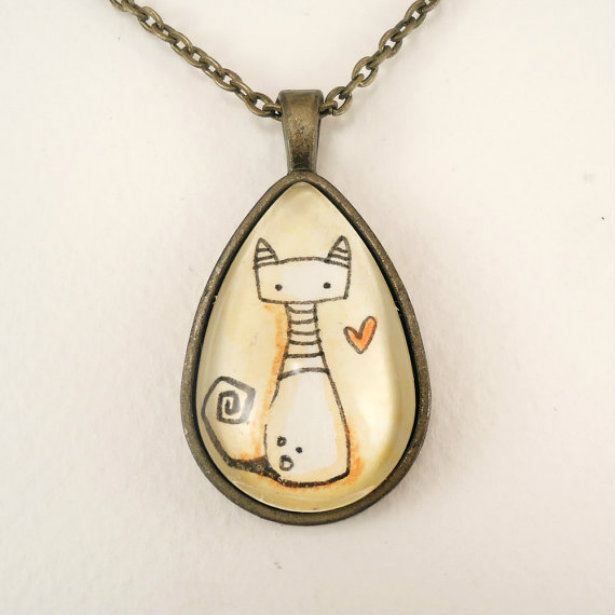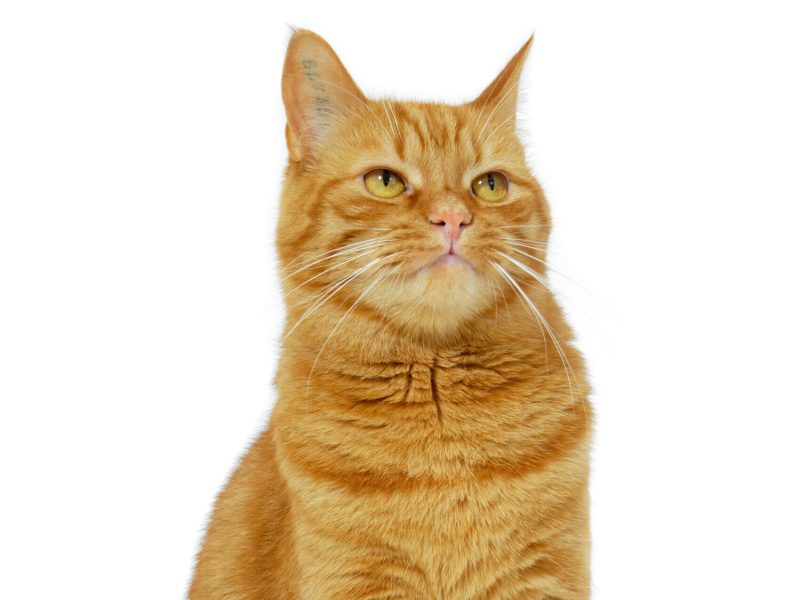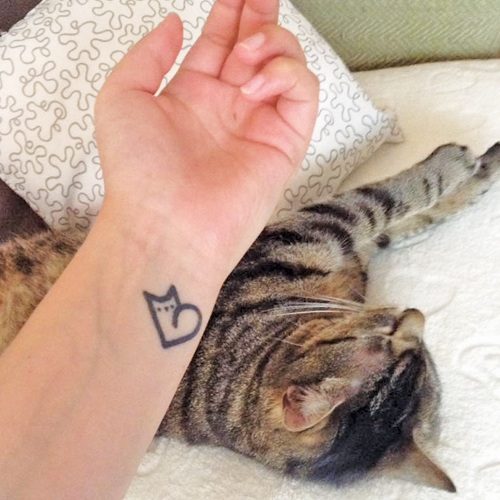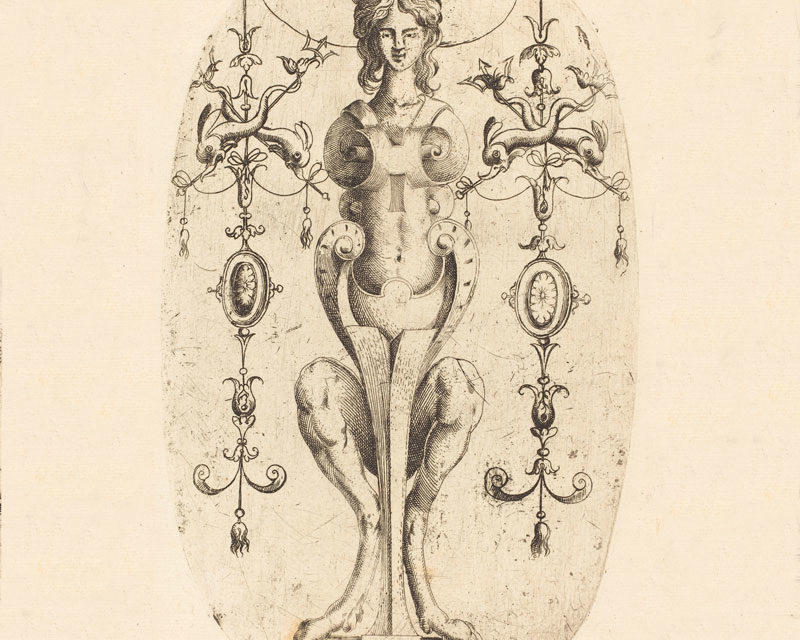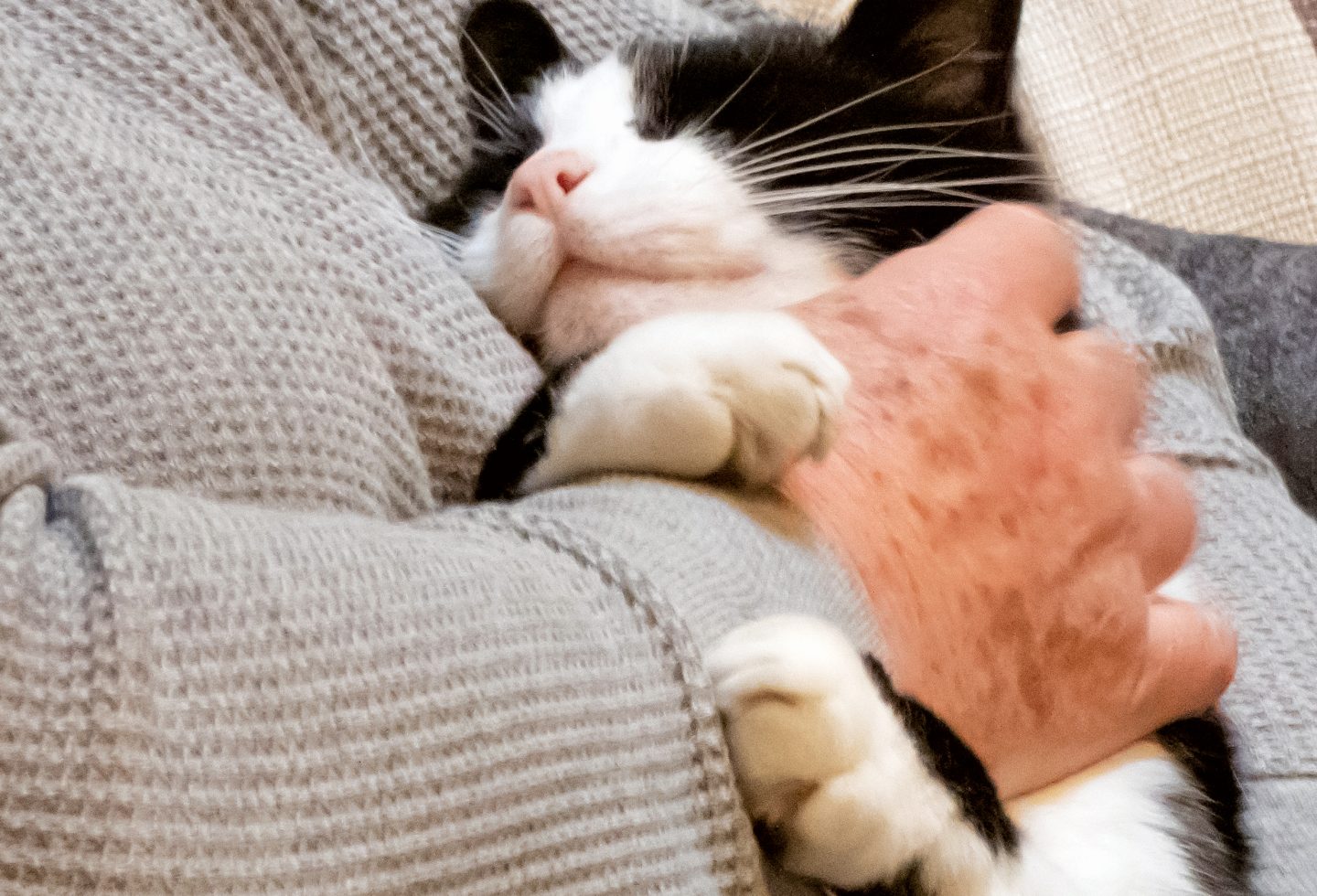
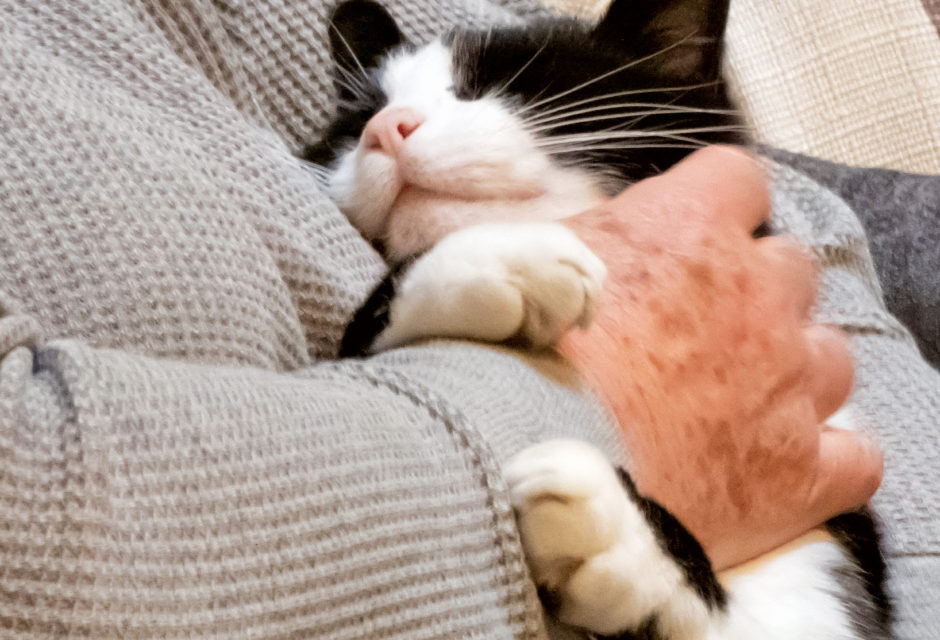
Why Therapy Cats are Just as Effective as Therapy Dogs!
Though less common than their canine counterparts, therapy cats are making a tremendous difference in the lives of challenged children and lonely seniors
A gangly grade six girl rushes into the seminar room at a Peel region school outside Toronto, Ontario, where Molly the therapy cat is holding court. Allison (not her real name) hasn’t seen the cat since the last term and isn’t sure the animal will recognize her. “Hi Molly,” she says and kneels down on the cat’s fuzzy red blanket. Molly’s head quickly turns at the sound of the student’s voice. She bounds towards the girl and greets her by placing her paws on the child’s legs. “She remembers me,” says Allison. Her voice is wispy with wonder.
Allison sits down beside the cat and begins scratching her ears. The animal cuddles closer. “Molly missed you,” says her owner, retired nurse Cathy James.
Molly belongs to the Therapeutic Paws of Canada’s Paws To Read division, an educational program that arranges weekly visits with cats or dogs for children with emotional challenges or reading difficulties. Molly is an anomaly in the therapy animal circuit dominated by dogs—she’s one of only 16 feline teams in Canada (compared to 570 canine counterparts). In the US, Pet Partners is the largest therapy pet organization in operation. 94 percent of their therapy animals are dogs, and the rest are cats and other animals. On the whole, dogs are better suited to be therapy animals than cats. They’re generally more gregarious and less stressed by leaving their home territory, says behavioral biologist Dennis Turner, director of the Institute for Applied Ethology and Animal Psychology in Zurich, Switzerland.
But while fewer felines make the cut, cats with an outgoing temperament are as effective as canines. “Cats can form powerful social bonds as strong as dogs and can serve as emotional supports if you earn their affection,” says Dennis. As research on the cat-human bond is exploding, it seems to be in line with Dennis’s views. According to one Australian study, cat owners were happier, more confident, and generally psychologically healthier than those without pets. And though most of these papers have focused on the advantages of companion animals, these benefits likely apply to visiting therapy cats, says Dennis. “That’s most probable since over a longer period the cat and the client will develop a relationship,” he says.
Allison has blossomed under Molly’s nurturing wing. She doesn’t fit in well with her classmates, and struggles academically, says teacher Angela James-Harris, who organizes the Paws To Read program at the school (and happens to be Cathy’s daughter). But the cat doesn’t care about her grades or her popularity. “Molly gives her positive attention—it’s made a big difference to her self-esteem,” says her teacher. Allison leaves the sessions happier and mingles more with her peers afterward.
Allison’s positive response to Molly isn’t unusual. Lynette Hart, Professor at the UC Davis School of Veterinary Medicine, has studied the pluses of pet ownership. Our emotional wellbeing depends on the quality of our personal relationships, she says. Attachment figures make us feel secure and provide a safe haven from which to explore the world. Companion animals, who love us unconditionally, can sometimes step into this role when human supports are lacking, says Lynette.
Lynette sheds light on this phenomenon in a 2018 study of children living with autism and their cats. 30 percent of the kids seemed to be glued to their pets. These animals greeted the children at the door, followed them around, and slept in their beds at night. The cats’ affection seemed to rub off on many of the youngsters, who began to engage more with their families. One girl, who didn’t like to be touched, began holding her mother’s hand when the cat lay in the child’s lap. The animals’ acceptance might have fostered these transformations, says Lynette. “The cats didn’t see their differences and treated them like anyone else,” she says. “That was affirming.”
Humans and other mammals have a built-in mechanism to promote these kinds of connections, says behavioral biologist Dennis Turner. When we pet a dog, we release a “feel-good” substance called oxytocin, normally produced when a mother breastfeeds her baby or when lovers gaze at each other. Oxytocin has a soothing effect, reducing the impact of stress hormones and making us feel united, says Dennis. And though this so-called “cuddle hormone” hasn’t yet been tested in cats, it’s likely that cats manifest the same physiological process, says Turner.
The psychological component of attachment to cats is better known. In a 2017 study done in Japan, subjects’ moods and brain activations were evaluated while they stroked both a toy cat and a real one. Not surprisingly, they experienced pleasure only after petting the latter. During these moments, brain regions associated with empathy lit up on the scans, suggesting that caressing the warm animals promoted a sense of closeness and wellbeing, says Dennis.
That seems to be happening at the Peel region school. Allison starts petting the cat as she catches up with Molly’s owner. Allison seems hungry for her listening ear. “I can do contortions—do you want to see my elbow bridge?” Cathy politely demurs because the room is too small for gymnastics. Then Allison moves to music, fluttering her fingers over an imaginary flute and listing all the reggae songs she’s mastered. James is appreciative. “I can’t sing at all,” she says.
Allison’s bond with Molly has catalyzed a connection with Cathy. Over the last year, as the two have chatted about the animal they both treasure, Allison has begun to let down her guard with Cathy, embracing her mentor wherever they meet. “She forgets that I’m an adult,” says Cathy. Allison’s teacher sees the value of this additional, human relationship. “Allison has few friends, so having another adult who values her does an amazing amount of good,” she says.
Cathy James and therapy cat Molly at Cathy’s home.
Animals often promote socialization, says researcher Gretchen Carlisle, a scientist at the University of Missouri’s Research Center for Human-Animal Interaction. In one study, she found that children living with autism who had a pet were more likely to introduce themselves to strangers and were generally more assertive. Though these youngsters sometimes obsess over topics others find dull, pets can bridge these differences.
“The animal gives them an opportunity to talk about something other kids wouldn’t want to discuss,” says Gretchen.
Molly’s young clients always want to know more about her.
Molly was seemingly destined to be a therapy cat. She was only a few weeks old when she was found abandoned in a parking lot by the North Halton Kitten Rescue, who took her in and provided round the clock bottle feedings until she was weaned. Angela then fostered the kitten until she was adopted by her mother, Cathy. Cathy believes this early and intense contact with humans molded Molly into a socialite.
The retired nurse was not planning to adopt a cat, as she already had one. But when her daughter called her to meet the “cute orange kitten,” she couldn’t resist. One look at the new arrival was all it took to change her mind. “I just loved her little face—I had to have her,” recalls Cathy.
The two were soon joined at the hip—literally. Protective towards the orphaned animal, Cathy carried her everywhere, wrapped in a blanket against her body. As Molly grew up, she shadowed her guardian all day and slept against her shoulder at night. “We were kindred spirits,” says Cathy.
Even during her kitten days, Molly seemed to be psychic. “She could sense when something was bothering me—she’d snuggle in and stay with me,” says Cathy. Molly’s affection during tough times has been comforting. “She helps me relax—she’s my own therapy cat.”
Behavioral biologist Dennis Turner has analyzed these kinds of sympathetic gestures. In several research papers, he noted that cats could tell when their owners were nervous or depressed, (provided they were near them at these moments). The animals dished out more devotion during these times, gazing into their guardians’ eyes, meowing, and rubbing against their legs. “The cats were trying to cheer them up,” he says.
The cats usually succeeded. Their owners perked up after these psychological boosts, and, in the long run, felt more supported and less lonely than those without pets, says the biologist.
He speculates that therapy cats could be of similar benefit to clients, provided they were tightly bonded. He points out that one third of all psychotherapeutic practices in the US employ cats. “Psychiatrists know the cats are helpful—we just have to prove it,” he says.
Cathy was certain that Molly’s affectionate nature could bring joy to others. When the cat was a year old, she developed an eye ulcer that required the frequent administration of stinging eyedrops. Although they were painful, Molly never once snarled or scratched. “Her personality was so mellow,” says Cathy. “She was special.”
When Molly was two, Cathy took her to Therapeutic Paws of Canada’s therapy cat evaluation. Molly kept her composure in the face of swinging purses, irritated voices, rolling wheelchairs, and other simulated real-life situations. She remained equally stoic during her child certification six months later, when kids hid treats in their pockets and pretended to cry. James was proud but not surprised. “I thought she’d do well because she’s so gentle.”
The therapy duo has thrived since they began volunteering with elementary students as well as nursing home residents. For the retired emergency room nurse, the opportunity to continue helping people has been rewarding. “It gives me personal satisfaction to see how little things can help,” she says. Her extroverted pet also enjoys appreciation. “Wherever there is lots of attention, Molly is pretty happy,” says Cathy.
There’s no shortage of admirers at Woodhall Retirement Home in the Greater Toronto Area. Resident Earl Craig is one of Molly’s regulars. The fragile-looking man with sparse grey hair sits in a chair in the hallway, and the cat makes herself at home on top of his walker, half asleep.
Earl leans forward, whispering “Coo-chi-coo-chi-coo.” Molly continues dozing. “Meow,” he tries. One of her eyes flutters open.
As he scratches behind her ears, Earl begins to reminisce about his own pet cat who lived on their family farm.
“She had white feet—she was special,” he says. He launches into an anecdote about the cat who would run away and could only be lured back with treats.
But it’s clear that Molly has an equally strong hold on his heart. Earl enjoys watching her. “She’s so serene—nothing bothers her,” he says. Molly’s placidity is contagious. “She’s relaxing,” he says.
Molly’s hour-long visit draws to a close. The senior stands as straight as his arthritic spine allows and wheels the cat down the hallway to the elevator. “Thank Earl for the ride,” says Cathy.
“In Europe, obstetricians often play recordings of purring cats while women are in labour, says Turner. “It’s an interesting, appeasing vocalization that seems to quiet us.”
“I’d do anything for Molly,” he replies.
Activity director Louise O’Byrne is also grateful for Molly’s weekly visits. “Some of our residents miss their own pets—so having the comfort of petting a cat is calming for them,” she says.
There are several factors that account for this alleviation of anxiety. The very presence of a cat can buffer our stress response and dial down distress. In one study, adults with and without cats were hooked up to heart monitors while they worked on difficult math problems. In most cases, the pet owners’ pulse and blood pressure were lower than those without a pacifying presence.
Gazing at the cat’s natural beauty is also good for our nerves, says Professor Lynette Hart. Following a feline’s slow-paced activity is more relaxing than watching a dog’s vigorous, often noisy behavior, she says. “The cat is calming in a way that the dog isn’t.”
The cat’s purr also reduces our tension, says Dennis. The sound, which cats produce when they’re injured (as well as when they’re content), seems to settle them and may promote the healing of injuries, says Dennis. The low-frequency rumble also appears to help humans unwind. In Europe, obstetricians often play recordings of purring cats while women are in labour, notes the biologist. “It’s an interesting, appeasing vocalization that seems to quiet us,” he says.
Back at the Peel school, Allison, like Earl, is reluctant to part with the therapy cat. She crouches down until her head is level with the animal’s, and peers intensely into Molly’s luminous green eyes. The animal holds her gaze. Allison folds her into one tight, final hug then straightens up and bounces out of the room back to class. Her step is a little lighter. She’s still smiling.
For more on Therapeutic Paws of Canada’s Paws to Read program, visit tpoc.ca.
For more on Pet Partners’s therapy pets and animal-assisted activities, including volunteer opportunities, visit petpartners.org.
Join the newsletter and never miss out on cat content again!
"*" indicates required fields
By clicking the arrow, you agree to our web Terms of Use and Privacy & Cookie Policy. Easy unsubscribe links are provided in every email.





